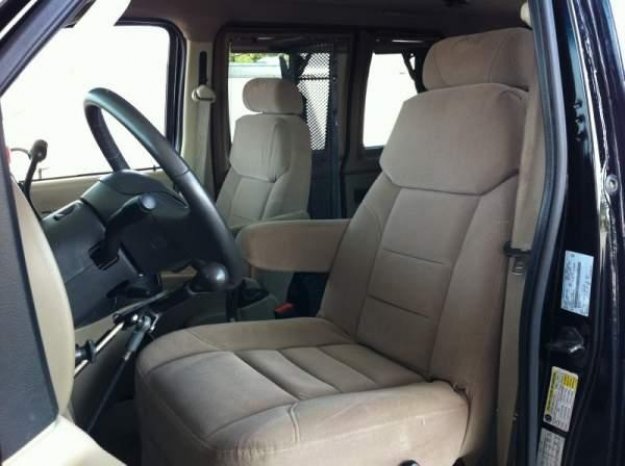Interior Handicap Driving Features Helping the Disabled Driver
There are many interior driving features designed to help improve access, comfort, safety and ease of use for the disabled driver. These various adjustments and modifications fall into a few distinct categories.
While this overview will not be comprehensive, it should provide you with an understanding of various common interior driving features designed to assist disabled drivers.
Vehicle Modifications
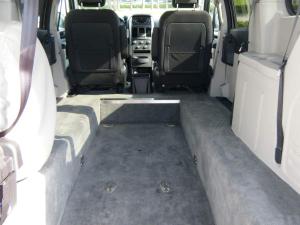 Some of the features upon which disabled drivers rely involve making substantial changes to the very structure of the van or minivan being used. For instance, the need for greater clearance may lead a vehicle owner to raise door heights or to fully or partially lower the vehicle’s floors.
Some of the features upon which disabled drivers rely involve making substantial changes to the very structure of the van or minivan being used. For instance, the need for greater clearance may lead a vehicle owner to raise door heights or to fully or partially lower the vehicle’s floors.
While expensive, these modifications can have a profound impact on a vehicle and its suitability for the disabled driver. They are some of the more expensive interior modifications, but many drivers will tell you that they are great investments.
Seating Adjustments
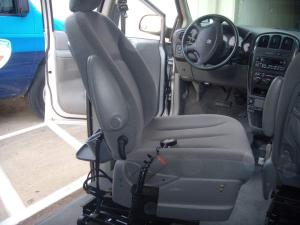 One area in which the handicapped driver has a large number of options is in seating. Modifications to “stock” seating arrangements can dramatically improve a vehicle’s suitability for use by the disabled driver.
One area in which the handicapped driver has a large number of options is in seating. Modifications to “stock” seating arrangements can dramatically improve a vehicle’s suitability for use by the disabled driver.
These adjustments might include replacing stock seats with swivel seats or transfer seats designed to provide wheelchair users with an easy way to transition from their wheelchair into the driver’s seat. Other examples would include deciding upon which seats to use (or not to use) within a van to balance one’s need for space with the ability to transport friends and family.
There are many different ways to arrange seating and just as many seating options. The right choices can make the driving experience much easier.
Securing Wheelchairs
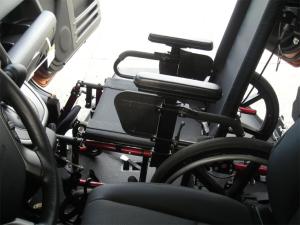 Getting someone with a wheelchair into a vehicle is an important first step, but additional action is required. Namely, the disabled driver or passenger must have his or her seat adequately secured. There are a number of ways to do this.
Getting someone with a wheelchair into a vehicle is an important first step, but additional action is required. Namely, the disabled driver or passenger must have his or her seat adequately secured. There are a number of ways to do this.
Some people may rely on the tried and true system of manual tie-downs. Others may elect for an electric, motorized tie-down options. Meanwhile, a growing number of people are experimenting with EZ Lock and other docking solutions in an effort to quickly and securely anchor chairs into position.
Doors and Handles
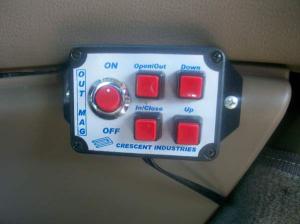 Getting in and out of a wheelchair van or accessible vehicle can often be a challenge. One key element of that challenge often involves heavy van doors and poorly located door handles.
Getting in and out of a wheelchair van or accessible vehicle can often be a challenge. One key element of that challenge often involves heavy van doors and poorly located door handles.
In response to this, many van users have been exploring automatic doors and remote entry systems. These motorized alternatives allow otherwise awkward and challenging doors to open and close with the push of a single button. Being able to get in and out of a vehicle safely and easily is essential for the disabled driver and these features make that possible.
Custom Controls
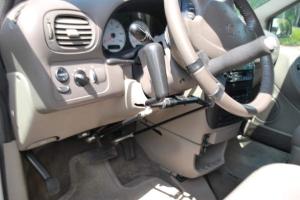 Not everyone drives the same way. While some people may be able to take the wheel in a “stock” vehicle without incident, many disabled drivers require special modifications.
Not everyone drives the same way. While some people may be able to take the wheel in a “stock” vehicle without incident, many disabled drivers require special modifications.
These can take the form of hand controls for those who find themselves unable to utilize the accelerator, brake and clutch pedals in a vehicle. Another example of these custom controls would include steering devices designed to make maneuvering a vehicle easier for those in need of accommodations.
A few simple adjustments to a vehicle’s interior can have a profound effect on its overall usability. These conversions allow many people the opportunity to drive who would otherwise be deprived of it.
These are only a few of the areas in which we see special interior handicap driving features. Modifications and conversions like these provide tremendous assistance to the disabled driver, providing him or her with greater levels of convenience and accessibility.

